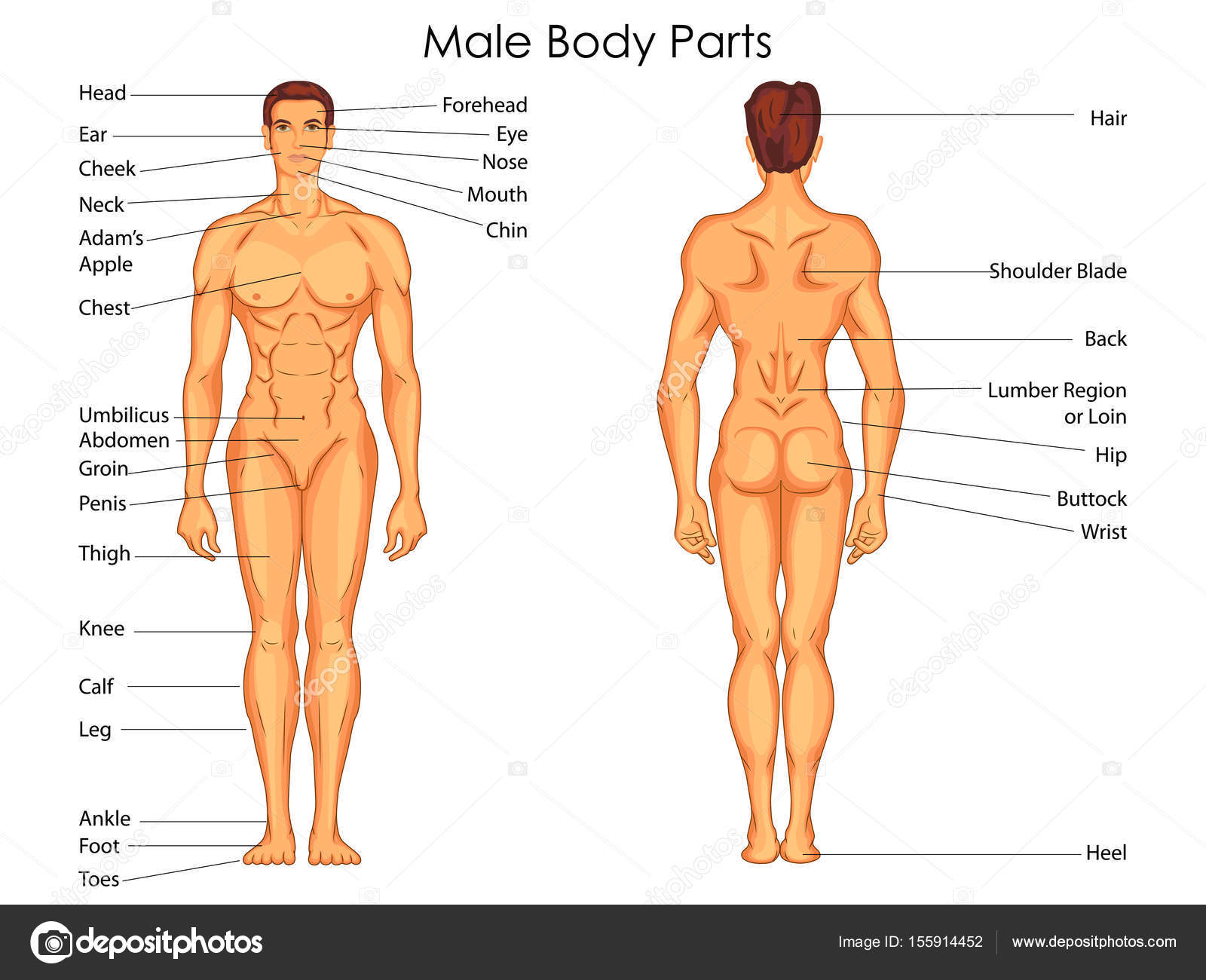Male parts diagram. Human Reproductive System: Anatomy, Function, and Development
How does the human reproductive system work. What are the main components of male and female reproductive organs. How is sex determined in humans. What are the stages of reproductive system development.
The Basics of Human Reproduction
The human reproductive system is a complex network of organs and processes that work together to create new life. At its core, reproduction involves the fusion of male and female gametes – sperm and egg cells – to form a zygote that develops into a new individual. But the reproductive system encompasses much more than just fertilization.
Key components of human reproduction include:
- Production of egg cells (ova) in females and sperm cells in males
- Release of an egg during ovulation in females
- Internal fertilization through sexual intercourse
- Implantation of the fertilized egg in the uterus
- Fetal development during pregnancy
- Childbirth
- Lactation to nourish the newborn
This intricate biological process requires the coordinated function of multiple organ systems in both males and females. Understanding the anatomy and physiology of the reproductive system is crucial for comprehending human development, fertility, and sexual health.

Male Reproductive Anatomy: Structure and Function
The male reproductive system consists of both internal and external structures designed to produce, store, and deliver sperm cells. The main components include:
External Structures
- Penis – The primary male sex organ used for sexual intercourse and urination
- Scrotum – A sac of skin that holds and protects the testes
Internal Structures
- Testes – Paired oval-shaped glands that produce sperm and testosterone
- Epididymis – Coiled tubes where sperm mature and are stored
- Vas deferens – Muscular tubes that transport sperm from the epididymis
- Seminal vesicles – Glands that produce seminal fluid
- Prostate gland – Produces prostatic fluid, a component of semen
- Bulbourethral glands – Produce a clear fluid that lubricates the urethra
How do these structures work together to enable male reproduction? The testes continuously produce sperm cells through spermatogenesis. These immature sperm travel to the epididymis where they mature and are stored. During sexual arousal, the sperm move through the vas deferens, mixing with fluids from the seminal vesicles, prostate, and bulbourethral glands to form semen. This semen is then ejaculated through the penis during orgasm, delivering sperm into the female reproductive tract.
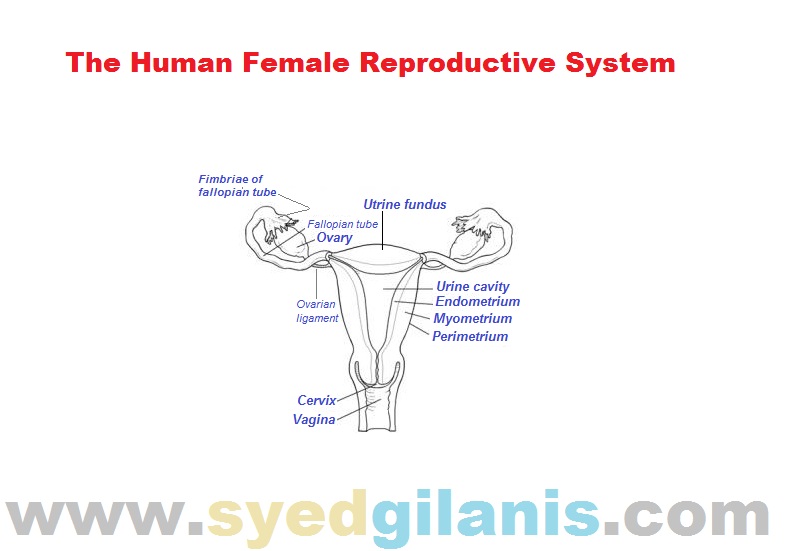
Female Reproductive Anatomy: Key Organs and Their Roles
The female reproductive system is designed to produce egg cells, facilitate fertilization, and support fetal development. Its main components include:
External Structures
- Vulva – The external genitalia, including the labia, clitoris, and vaginal opening
Internal Structures
- Vagina – Muscular canal that connects the external genitalia to the cervix
- Cervix – The lower, narrow part of the uterus that opens into the vagina
- Uterus – Muscular organ where a fertilized egg implants and fetal development occurs
- Fallopian tubes – Tubes that connect the ovaries to the uterus
- Ovaries – Paired glands that produce egg cells and hormones
How does the female reproductive system function? The ovaries release an egg (ovum) during ovulation, typically once per menstrual cycle. The egg travels through the fallopian tube, where it may be fertilized by sperm. If fertilization occurs, the resulting zygote implants in the uterus and develops into a fetus. The uterus provides nourishment and protection for the growing fetus throughout pregnancy. If fertilization does not occur, the uterine lining is shed during menstruation, and the cycle begins anew.

The Menstrual Cycle: Hormones and Reproductive Rhythms
The menstrual cycle is a complex interplay of hormones that prepares the female body for potential pregnancy each month. But how exactly does this cycle work?
The menstrual cycle can be divided into several phases:
- Menstrual phase (days 1-5): The uterine lining is shed
- Follicular phase (days 1-13): Follicles in the ovary develop, one becomes dominant
- Ovulation (day 14): The mature egg is released from the ovary
- Luteal phase (days 15-28): The ruptured follicle forms a corpus luteum, preparing the uterus for potential implantation
These phases are regulated by hormones including:
- Follicle-stimulating hormone (FSH)
- Luteinizing hormone (LH)
- Estrogen
- Progesterone
Understanding the menstrual cycle is crucial for tracking fertility, managing contraception, and diagnosing reproductive health issues. Cycle length and regularity can vary between individuals, but significant deviations may indicate underlying health concerns.
Fertilization and Early Embryonic Development
Fertilization is the pivotal moment when a sperm cell fuses with an egg cell to create a new organism. But what happens after this crucial event?

The process of fertilization and early development includes:
- Sperm penetration of the egg’s outer layers
- Fusion of sperm and egg nuclei to form a zygote
- Rapid cell division (cleavage) to form a ball of cells called a morula
- Formation of a fluid-filled cavity, creating a blastocyst
- Implantation of the blastocyst in the uterine wall
After implantation, the embryo continues to develop, forming distinct cell layers that will eventually become different tissues and organs. This process, known as gastrulation, marks the beginning of organogenesis – the formation of specific body structures.
Throughout early development, the embryo relies on nutrients from the mother, transferred through the developing placenta. This intricate dance of cellular division and differentiation sets the stage for the complex process of fetal development that follows.
Pregnancy and Fetal Development: From Conception to Birth
Pregnancy is a remarkable journey that transforms a single cell into a fully formed human being. But what are the key milestones in this process?

Pregnancy is typically divided into three trimesters:
First Trimester (Weeks 1-12)
- All major organs and structures begin to form
- The heart starts beating
- Limb buds appear and start to develop into arms and legs
- Brain and nervous system begin to develop
Second Trimester (Weeks 13-26)
- The fetus begins to move and kick
- Sex organs are fully developed
- Hair, nails, and eyebrows form
- The fetus can hear and swallow
Third Trimester (Weeks 27-40)
- Rapid weight gain and growth
- Lungs mature in preparation for breathing
- The fetus settles into a head-down position for birth
- Brain development continues at a rapid pace
Throughout pregnancy, the mother’s body undergoes significant changes to support fetal development. The uterus expands, blood volume increases, and hormones prepare the body for childbirth and lactation. Regular prenatal care is crucial to monitor both maternal and fetal health throughout this transformative period.
Reproductive Health: Challenges and Considerations
While the human reproductive system is remarkably efficient, various factors can impact reproductive health and fertility. What are some common reproductive health issues?

Female Reproductive Health Concerns
- Polycystic ovary syndrome (PCOS)
- Endometriosis
- Uterine fibroids
- Ovarian cysts
- Cervical cancer
Male Reproductive Health Concerns
- Erectile dysfunction
- Low sperm count or motility
- Prostate issues
- Testicular cancer
General Reproductive Health Considerations
- Sexually transmitted infections (STIs)
- Infertility
- Contraception
- Menopause and andropause
Maintaining reproductive health involves regular check-ups, safe sexual practices, and awareness of potential issues. Factors such as age, lifestyle, environmental exposures, and genetics can all impact reproductive function. Early detection and treatment of reproductive health problems can significantly improve outcomes and preserve fertility.
Advances in Reproductive Medicine: Technologies and Treatments
The field of reproductive medicine has seen remarkable advancements in recent decades. What are some of the cutting-edge technologies and treatments available today?
Assisted Reproductive Technologies (ART)
- In vitro fertilization (IVF)
- Intracytoplasmic sperm injection (ICSI)
- Preimplantation genetic testing (PGT)
- Egg and sperm freezing
- Surrogacy
Fertility Treatments
- Ovulation induction medications
- Intrauterine insemination (IUI)
- Surgical interventions for structural issues
Emerging Technologies
- Uterus transplants
- In vitro gametogenesis (creating gametes from stem cells)
- Gene editing techniques like CRISPR
These advancements have opened new possibilities for individuals and couples facing fertility challenges. However, they also raise complex ethical and legal questions that society continues to grapple with. As reproductive technologies evolve, it’s crucial to consider both their potential benefits and their broader implications for human reproduction and society.

The human reproductive system is a marvel of biological engineering, capable of creating new life through a complex series of coordinated processes. From the production of gametes to the development of a fully formed human being, each step in the reproductive process is precisely regulated and timed. Understanding the intricacies of human reproduction not only satisfies our curiosity about our own biology but also informs medical practices, guides reproductive health decisions, and shapes our understanding of human development.
As we continue to unravel the mysteries of reproduction and push the boundaries of reproductive medicine, we gain new insights into the fundamental processes that shape human life. This knowledge empowers individuals to make informed decisions about their reproductive health, helps medical professionals develop more effective treatments for fertility issues, and opens up new possibilities for assisted reproduction.
The study of human reproduction is a dynamic and evolving field, with new discoveries and technologies constantly emerging. By staying informed about these advancements and understanding the basics of our reproductive biology, we can better appreciate the complexity and wonder of human life from its very beginnings.

Human reproductive system | Definition, Diagram & Facts
male and female reproductive systems
See all media
Category:
Science & Tech
- Key People:
- Gabriel Fallopius
George Washington Corner
Reinier de Graaf
- Related Topics:
- zygote
gonad
gamete
female reproductive system
male reproductive system
See all related content →
human reproductive system, organ system by which humans reproduce and bear live offspring. Provided all organs are present, normally constructed, and functioning properly, the essential features of human reproduction are (1) liberation of an ovum, or egg, at a specific time in the reproductive cycle, (2) internal fertilization of the ovum by spermatozoa, or sperm cells, (3) transport of the fertilized ovum to the uterus, or womb, (4) implantation of the blastocyst, the early embryo developed from the fertilized ovum, in the wall of the uterus, (5) formation of a placenta and maintenance of the unborn child during the entire period of gestation, (6) birth of the child and expulsion of the placenta, and (7) suckling and care of the child, with an eventual return of the maternal organs to virtually their original state.
For this biological process to be carried out, certain organs and structures are required in both the male and the female. The source of the ova (the female germ cells) is the female ovary; that of spermatozoa (the male germ cells) is the testis. In females, the two ovaries are situated in the pelvic cavity; in males, the two testes are enveloped in a sac of skin, the scrotum, lying below and outside the abdomen. Besides producing the germ cells, or gametes, the ovaries and testes are the source of hormones that cause full development of secondary sexual characteristics and also the proper functioning of the reproductive tracts. These tracts comprise the fallopian tubes, the uterus, the vagina, and associated structures in females and the penis, the sperm channels (epididymis, ductus deferens, and ejaculatory ducts), and other related structures and glands in males. The function of the fallopian tube is to convey an ovum, which is fertilized in the tube, to the uterus, where gestation (development before birth) takes place. The function of the male ducts is to convey spermatozoa from the testis, to store them, and, when ejaculation occurs, to eject them with secretions from the male glands through the penis.
The function of the male ducts is to convey spermatozoa from the testis, to store them, and, when ejaculation occurs, to eject them with secretions from the male glands through the penis.
At copulation, or sexual intercourse, the erect penis is inserted into the vagina, and spermatozoa contained in the seminal fluid (semen) are ejaculated into the female genital tract. Spermatozoa then pass from the vagina through the uterus to the fallopian tube to fertilize the ovum in the outer part of the tube. Females exhibit a periodicity in the activity of their ovaries and uterus, which starts at puberty and ends at the menopause. The periodicity is manifested by menstruation at intervals of about 28 days; important changes occur in the ovaries and uterus during each reproductive, or menstrual, cycle. Periodicity, and subsequently menstruation, is suppressed during pregnancy and lactation.
This articles describes the organs, both male and female, that are involved in human reproduction. The reproductive process itself is covered in other articles. For a detailed discussion of the series of changes that occur in a woman’s body as her fetus develops, see pregnancy. For a description of the stages of labour and delivery, see parturition. For the development of the unborn child during gestation, see human embryology. For coverage of the many diseases and disorders that can affect the reproductive organs, see reproductive system disease.
The reproductive process itself is covered in other articles. For a detailed discussion of the series of changes that occur in a woman’s body as her fetus develops, see pregnancy. For a description of the stages of labour and delivery, see parturition. For the development of the unborn child during gestation, see human embryology. For coverage of the many diseases and disorders that can affect the reproductive organs, see reproductive system disease.
Britannica Quiz
The Human Body
The sex of a child is determined at the time of fertilization of the ovum by the spermatozoon. The differences between a male and a female are genetically determined by the chromosomes that each possesses in the nuclei of the cells. Once the genetic sex has been determined, there normally follows a succession of changes that will result, finally, in the development of an adult male or female. There is, however, no external indication of the sex of an embryo during the first eight weeks of its life within the uterus. This is a neutral or indifferent stage during which the sex of an embryo can be ascertained only by examination of the chromosomes in its cells.
This is a neutral or indifferent stage during which the sex of an embryo can be ascertained only by examination of the chromosomes in its cells.
The next phase, one of differentiation, begins first in gonads that are to become testes and a week or so later in those destined to be ovaries. Embryos of the two sexes are initially alike in possessing similar duct systems linking the undifferentiated gonads with the exterior and in having similar external genitalia, represented by three simple protuberances. The embryos each have four ducts, the subsequent fate of which is of great significance in the eventual anatomical differences between men and women. Two ducts closely related to the developing urinary system are called mesonephric, or wolffian, ducts. In males each mesonephric duct becomes differentiated into four related structures: a duct of the epididymis, a ductus deferens, an ejaculatory duct, and a seminal vesicle. In females the mesonephric ducts are largely suppressed. The other two ducts, called the paramesonephric or müllerian ducts, persist, in females, to develop into the fallopian tubes, the uterus, and part of the vagina; in males they are largely suppressed. Differentiation also occurs in the primitive external genitalia, which in males become the penis and scrotum and in females the vulva (the clitoris, labia, and vestibule of the vagina).
Differentiation also occurs in the primitive external genitalia, which in males become the penis and scrotum and in females the vulva (the clitoris, labia, and vestibule of the vagina).
Get a Britannica Premium subscription and gain access to exclusive content.
Subscribe Now
At birth the organs appropriate to each sex have developed and are in their adult positions but are not functioning. Various abnormalities can occur during development of sex organs in embryos, leading to hermaphroditism, pseudohermaphroditism, and other chromosomally induced conditions. During childhood until puberty there is steady growth in all reproductive organs and a gradual development of activity. Puberty marks the onset of increased activity in the sex glands and the steady development of secondary sexual characteristics.
In males at puberty the testes enlarge and become active, the external genitalia enlarge, and the capacity to ejaculate develops. Marked changes in height and weight occur as hormonal secretion from the testes increases. The larynx, or voice box, enlarges, with resultant deepening of the voice. Certain features in the skeleton, as seen in the pelvic bones and skull, become accentuated. The hair in the armpits and the pubic hair becomes abundant and thicker. Facial hair develops, as well as hair on the chest, abdomen, and limbs. Hair at the temples recedes. Skin glands become more active, especially apocrine glands (a type of sweat gland that is found in the armpits and groin and around the anus).
The larynx, or voice box, enlarges, with resultant deepening of the voice. Certain features in the skeleton, as seen in the pelvic bones and skull, become accentuated. The hair in the armpits and the pubic hair becomes abundant and thicker. Facial hair develops, as well as hair on the chest, abdomen, and limbs. Hair at the temples recedes. Skin glands become more active, especially apocrine glands (a type of sweat gland that is found in the armpits and groin and around the anus).
In females at puberty, the external genitalia enlarge and the uterus commences its periodic activity with menstruation. The breasts develop, and there is a deposition of body fat in accordance with the usual contours of the mature female. Growth of axillary (armpit) and pubic hair is more abundant, and the hair becomes thicker.
Male sex organs and reproductive system
Diagram of the male reproductive system
The testicles are 2 organs that are covered by a sac of skin
called the scrotum. They produce hormones (mostly testosterone) and sperm.
They produce hormones (mostly testosterone) and sperm.
The male reproductive system is controlled by the pituitary
gland in the brain. When puberty begins, the pituitary gland signals the
testicles by releasing the follicle-stimulating hormone (FSH) and the luteinizing
hormone (LH). The testicles then start to make testosterone and sperm.
Testosterone is responsible for male sexual development, including deepening of
the voice, enlargement of the penis and testicles, growth of facial and body
hair and muscle development.
The epididymis sits on the back of each testicle. It stores sperm cells so they can mature.
The vas deferens carries mature sperm to the urethra for
ejaculation.
The prostate is deep in the pelvis in front of the rectum and
below the bladder. It makes prostatic fluid. Prostatic fluid is rich in enzymes, proteins and
minerals that help protect and nourish sperm. During sex, the prostate pushes
prostatic fluid through the ducts and into the urethra. Prostatic fluid mixes
Prostatic fluid mixes
with sperm and other fluids in the urethra and is ejaculated as semen.
The seminal vesicles are glands found on each side of the
prostate. They make most of the fluid in semen. The seminal vesicles fuse with
the vas deferens to empty into the urethra.
The urethra carries urine (pee) from the bladder to the outside
of the body. It also carries sperm out of the body through the meatus (opening
of the urethra out of the body) during ejaculation.
Diagram of the penis
The penis has 3 parts. The shaft is the main part of the penis. The head of the penis is called the glans. The glans is covered by a loose fold of moveable skin called the foreskin (prepuce). Sometimes the foreskin is surgically removed in an operation called a circumcision. The base of the penis within the pelvis is called the root.
For the penis to penetrate a vagina or an anus during sex, it needs to be erect, or stiff. An erection begins when the brain sends a signal down the spinal cord through the nerves that run to the pelvis. Nerves signal the blood vessels inside of each corpus cavernosum of the penis to fill with blood. When the blood flow increases, the spongy tissue expands and causes the penis to stiffen and enlarge.
An erection begins when the brain sends a signal down the spinal cord through the nerves that run to the pelvis. Nerves signal the blood vessels inside of each corpus cavernosum of the penis to fill with blood. When the blood flow increases, the spongy tissue expands and causes the penis to stiffen and enlarge.
During an orgasm, the prostate, seminal vesicles and vas deferens contract to move semen near the top of the urethra and then out during ejaculation. Each ejaculation can release up to 500 million sperm. After ejaculation, the extra blood flows out of the penis and the penis becomes soft again.
For pregnancy, semen ejaculated into a vagina (in the female reproductive system) allows for sperm to swim up through the cervix and uterus into the fallopian tube to meet an egg (if one is there). It only takes one sperm to fertilize the egg. Once fertilized, the egg grows in the uterus becoming an embryo and then a fetus.
Tim Rowe, MB BS, FRCSC, FRCOG
John Robinson, PhD, R Psych
Martini FH, Timmons MJ, Tallitsch RB.
 Human Anatomy. 7th ed. San Francisco: Pearson Benjamin Cummings; 2012.
Human Anatomy. 7th ed. San Francisco: Pearson Benjamin Cummings; 2012.Cancer Research UK. Men’s Sexual Organs. 2018: https://www.cancerresearchuk.org/about-cancer/coping/physically/sex/mens-organs.
American Cancer Society
. Sex and the Adult Male with Cancer
. 2021
: https://www.cancer.org/treatment/treatments-and-side-effects/physical-side-effects/fertility-and-sexual-side-effects/sexuality-for-men-with-cancer/treatment-and-desire-and-response.html.American Society of Clinical Oncology. Sexual Health and Cancer Treatment: Men. 2019: https://www.cancer.net/navigating-cancer-care/dating-sex-and-reproduction/sexual-health-and-cancer-treatment-men.

National Cancer Institute. Sexual Health Issues in Men with Cancer. 2018: https://www.cancer.gov/about-cancer/treatment/side-effects/sexuality-men.
Cancer Research UK. About Sexuality and Sex Life. 2021: https://www.cancerresearchuk.org/about-cancer/coping/physically/sex/about-sexuality.
Cancer Research UK. How Cancer Can Affect Your Sexuality and Sex Life. 2018: https://www.cancerresearchuk.org/about-cancer/coping/physically/sex/effects#.
Anatomy and function of the male reproductive system
In men and women, the genital organs are located both inside the pelvic cavity and outside it.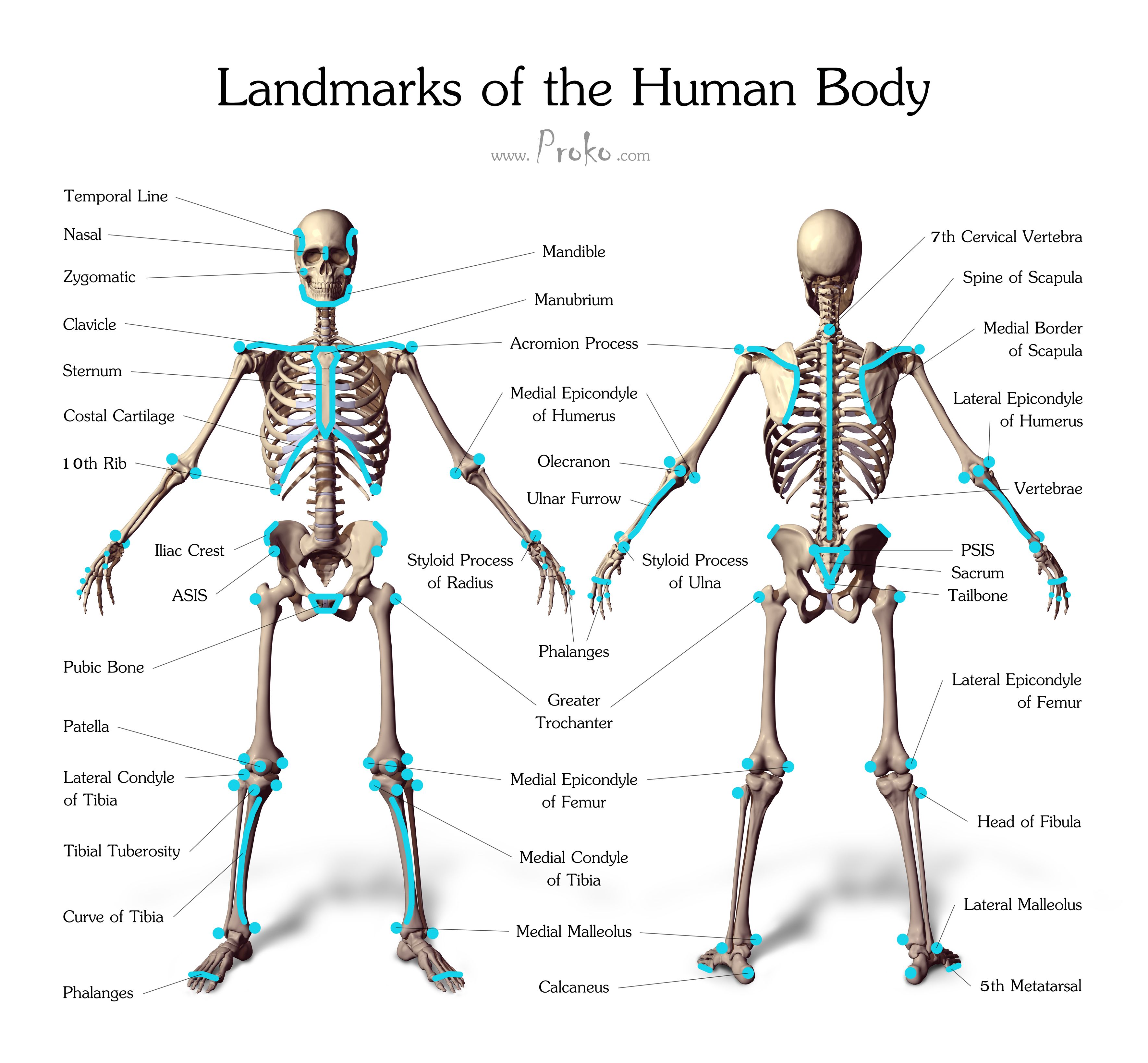 Most of the male reproductive system is located outside. Such a device in wildlife is a demonstration of its strength and superiority. Perhaps this is why many, if not most, men are embarrassed to see a doctor if they have problems in their intimate life.
Most of the male reproductive system is located outside. Such a device in wildlife is a demonstration of its strength and superiority. Perhaps this is why many, if not most, men are embarrassed to see a doctor if they have problems in their intimate life.
This article is not to be used for diagnosis, treatment, and is not a substitute for seeing a doctor.
The reproductive system of a man is extremely important, as well as other systems of the body that ensure normal life. Therefore, an untimely appeal to a specialist or, even worse, ignoring the warning signs, creates much bigger problems than they were originally.
The male reproductive system has three main tasks:
- Formation of spermatozoa in the testes (seniferous tubules). In the process of one ejaculation, 30-500 million spermatozoa come out.
- Evacuation of seminal fluid from the male genital organs and its delivery to the female.
- Synthesis of the main androgen (a group of steroid sex hormones in men) – testosterone.

Structure and functions of the external male genitalia
The group of male external reproductive organs includes:
- Penis (penis) – an organ involved in sexual contact, spewing seminal fluid. The place of attachment of the phallus to the pubis is the root. The body of the penis and the head are covered by the foreskin (skin fold), which normally should easily and painlessly move away, exposing the head. In the foreskin there are multiple glands that produce smegma (sebaceous lubricant). Internally, the penis consists of two cavernous (cavernous) and one spongy (spongiform) bodies. It is to the cavernous bodies that a man owes the appearance of an erection, in which the bodies are filled with blood and “swell”, increasing the size of the penis. In the spongy body is the urethra (urethra), which blocks the path for the passage of urine during intercourse and ejaculation.
- Testicles (testicles) – olive-shaped paired organs of different sizes produce testosterone and spermatozoa.
 They are located in the sac (scrotum), which acts as a “climate control”. For healthy spermatogenesis (sperm production), the testicles must be maintained at a constant temperature below general body temperature. This provides the scrotum and the external location of the testicles. Otherwise, spermatogenesis will be impaired, which will negatively affect fertility (the ability to conceive).
They are located in the sac (scrotum), which acts as a “climate control”. For healthy spermatogenesis (sperm production), the testicles must be maintained at a constant temperature below general body temperature. This provides the scrotum and the external location of the testicles. Otherwise, spermatogenesis will be impaired, which will negatively affect fertility (the ability to conceive). - The epididymis is an oblong narrow paired organ, part of the vas deferens. In the epididymis, spermatozoa accumulate and mature for further advancement into the vas deferens. Spermatozoa accumulate in a thickening formed in the tail. In the scrotum, the appendage is adjacent to the testicle, forming a pocket. Normally, it is easily palpable through the scrotum.
Male internal genitalia
The main internal male organ is the exocrine androgen-dependent prostate gland, nut-shaped, located in the center of the pelvis near the bladder. The function of the gland is to control urination, erection, ejaculation, ensure the viability of spermatozoa and transport them.
The function of the gland is to control urination, erection, ejaculation, ensure the viability of spermatozoa and transport them.
Isolate the secretory and barrier function of the prostate. The gland produces its own secret, which enters the sperm during ejaculation. The secret contains enzymes, acids, immunoglobulins and other trace elements. The secret also contains immunity factors that allow the prostate to perform a barrier function, which consists in preventing the penetration of pathogenic microflora from the urethra into the urinary tract and preventing the spread of microorganisms from the urethra to the vas deferens. The presence of zinc ions in secret protects the male genital tract from infection. The work of the gland is controlled by pituitary and steroid hormones, estrogens.
Male internal genital organs also include:
- Deferent ducts — their task is to transport ejaculate to the urethra, which can also be attributed to the reproductive system.
 The ducts originate from the appendages of the testicles.
The ducts originate from the appendages of the testicles. - Seminal vesicles – produce a fluid that is part of the semen. The secret of the bubbles, containing a large amount of fructose, is “responsible” for the vital energy of spermatozoa.
- Bulbourethral glands – tiny pea-sized Cooper glands located near the prostate, secrete into the urethra. The secret of the glands lubricates the walls of the urethra, neutralizes the acidity of urine.
Hormones that regulate the function of the male reproductive system
The function of the reproductive system in men is regulated by three main hormones:
- Luteinizing (LH).
- Follicle stimulating (FSH).
- Testosterone.
LH and FSH are pituitary hormones. Testosterone is synthesized under the influence of LH, spermatozoa are formed under the influence of LH. Testosterone is responsible for the timely appearance of secondary sexual characteristics, seminal fluid production, muscle building, physical strength and endurance, libido, voice pitch.
Function of hormones in the male reproductive system
Read more about hormones in men in this material – note. altravita-ivf.ru
Sperm formation
Spermatogenesis (production of seminal fluid) is carried out under the influence and control of hormonal substances. It starts from the moment of puberty (11-15 years), therefore, until this age, spermatozoa are not produced in the boy’s body. When testosterone reaches the age-appropriate level in a teenager, this leads to the activation of stem cells in the testicles (spermogonia). Spermogonium is converted into spermatocytes containing a double chromosome set. Spermatocytes divide, forming, in turn, secondary spermatocytes, which contain one chromosome set each.
The spermatocytes are then transformed into spermatid cells, which undergo spermiogenesis (the final stage of spermatogenesis). Spermatid cells turn into spermatozoa, which mature in the epididymis. After maturation, the sperm are ready to fertilize the egg.
After maturation, the sperm are ready to fertilize the egg.
The speed of movement of spermatozoa is 20 cm / h with a length of only 0.05 mm.
Menopause in men: myth or reality?
Menopause or menopause is the cessation of the activity of the female sex glands (ovaries), as a result of which menstruation completely stops. The reason for this is the cessation or a significant decrease in the production of estrogen by the ovaries. Men never stop producing testosterone, and any man can theoretically become a father in old age. Exceptions are severe diseases or congenital anomalies that affect spermatogenesis and erectile function. With age (from 35-45 years old), testosterone production begins to decline, and fertility also decreases accordingly. Having passed the analysis for testosterone, men have the opportunity to assess the state of their health.
Reducing the production of male sex hormones occurs under the influence of various factors: endocrine diseases, obesity, chronic diseases, STDs, stress, constant overheating of the testicles in saunas, baths, frequent hypothermia, depression, trauma, accidents (electric shock, accidents) and so Further. The impact of adverse factors leads not only to a decrease in testosterone production, but also to erectile and ejaculatory dysfunction.
The impact of adverse factors leads not only to a decrease in testosterone production, but also to erectile and ejaculatory dysfunction.
The structure of a flower and the meaning of its main parts
Contents
- Main parts of the flower
- Receptacle
- Sepals
- Petals
- Stamens
- Pistil
- The stem part includes the pedicel and receptacle;
- The leaf part consists of sepals and petals;
- The generative part is formed by stamens, pistil or pistils.
- The stigma is located at the tip of the pestle.

9001 7
Flowers are the distinguishing feature of flowering or angiosperms, which make up the majority of the plant kingdom. These are the reproductive organs of the plant, from which fruits with seeds are formed. Flowers are of two types – bisexual and unisexual. Bisexual flowers are hermaphrodites, meaning they have both male (stamens) and female (pistil) reproductive parts.
On the other hand, unisexual flowers have either male (stamens) or female (pistil) reproductive parts. Plants that bear both staminate (male) and pistillate (female) flowers on the same individual are called monoecious, while those that bear only staminate (male) or only pistillate (female) flowers are called dioecious.
Flowers have evolved to have a bright and colorful appearance (for the most part) which is necessary to attract pollinators such as birds, butterflies, bees and wasps.
Scheme of the structure of a loose flower. Image: Wikimedia Common
Although the flowers vary in shape and size, their anatomy is usually the same:
A flower that has all parts is called complete, and a flower that lacks one or more parts is called incomplete.
Flower parts are also subdivided into fertile or reproductive (stamens, pistil or pistils) and sterile (perianth).
Let’s look at the main parts of the flower in more detail:
Receptacle
The receptacle is an extended structure at the end of the pedicel to which all other parts of the flower (sepals, petals, stamens, pistils) are attached. The receptacle has a stem (shoot) origin, in contrast to the rest of the parts that have a leaf origin.
The receptacle has a stem (shoot) origin, in contrast to the rest of the parts that have a leaf origin.
Sepals
Flower buds are often covered with green leafy structures called sepals that protect them during the bud stage. All the sepals of a flower form an outer whorl called the calyx. Although the sepals are usually green, they can vary in color depending on the type of plant.
Plant flowers such as anemones do not have sepals, while in some flowers they are modified into bracts, small leaf-like structures located around the flower. The bracts of some plants can be larger and brighter than the petals. Petalless flowers usually have modified sepals that are larger and brightly colored to attract pollinators.
Petals
Petals are the most visible part of the flower structure due to their bright color (in most cases) and sometimes scent. Their main function is to attract pollinators as well as protect the internal reproductive parts of the flower.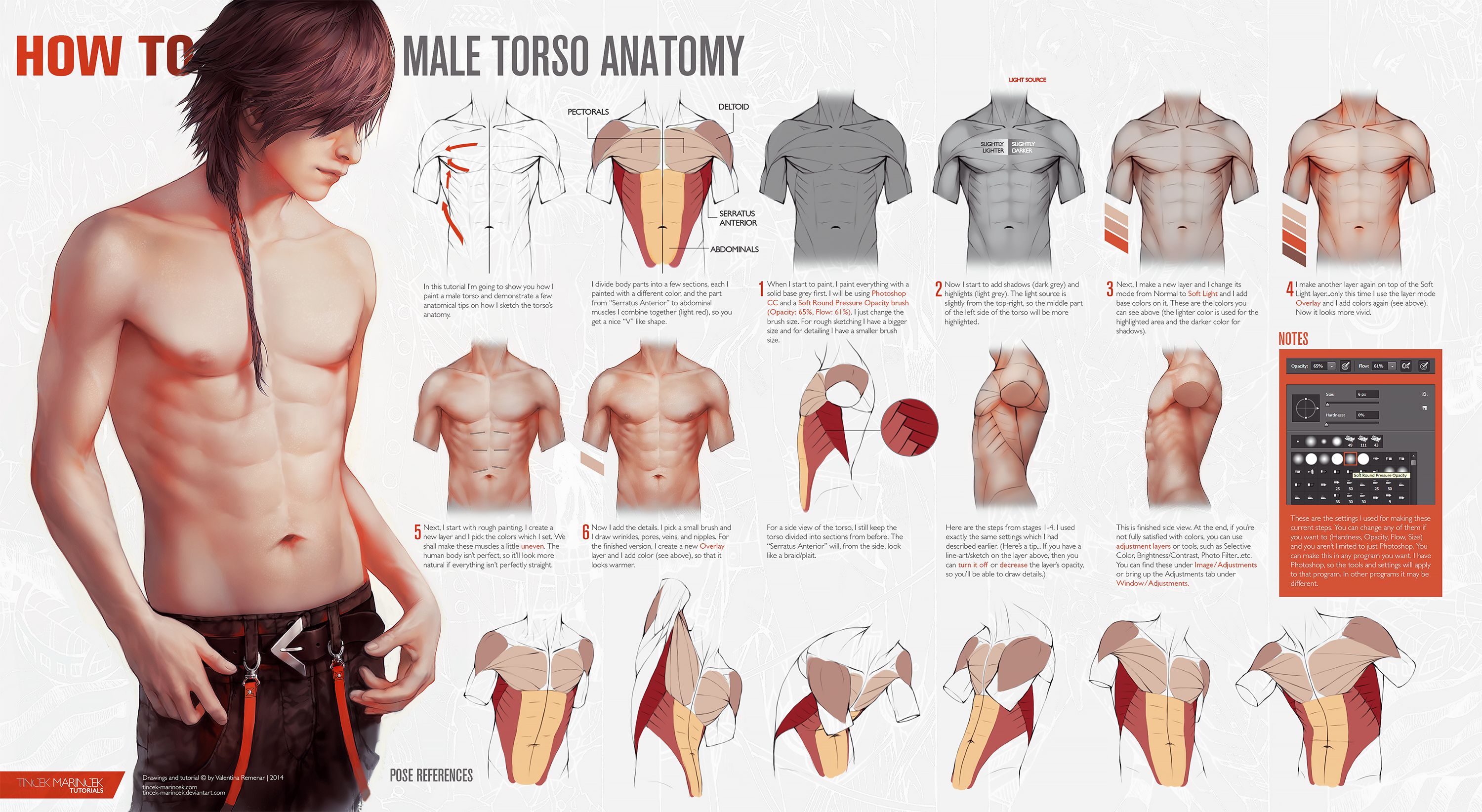
Some flowers have missing or reduced petals. The whorl of petals is called a corolla. The calyx and corolla together form the perianth.
Stamens
The stamen is the male part of the flower, and together all the stamens form the inner third whorl of the floral structure, the androecium. Each stamen is made up of a long, tubular filament with a sac at the top, called an anther. Pollen grains contain male reproductive cells or male gametes and are produced in anthers (each anther contains many pollen grains).
One pollen grain contains vegetative and generative cells. The vegetative cell forms the pollen tube and the generative cell fertilizes the female reproductive cell. When the pollinator touches the anther, the pollen sticks to the pollinator and is carried to other flowers visited by the pollinator.
Pistil
Pistil — the female reproductive organ of a flower, consisting of three main parts: stigma, style and ovary:

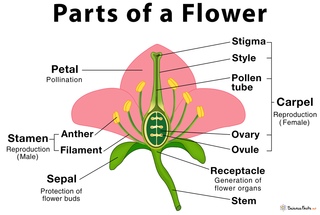 Human Anatomy. 7th ed. San Francisco: Pearson Benjamin Cummings; 2012.
Human Anatomy. 7th ed. San Francisco: Pearson Benjamin Cummings; 2012.
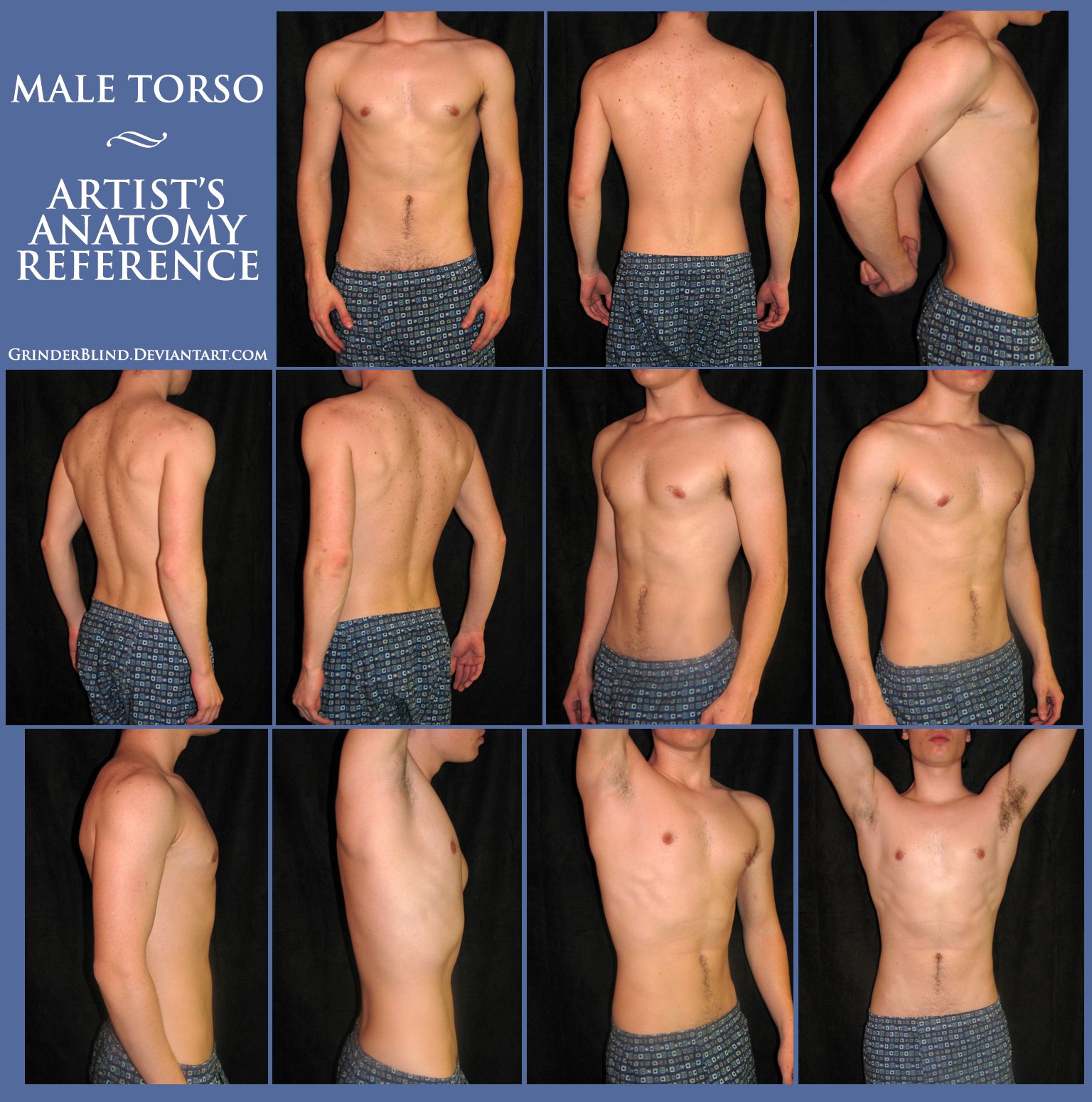
 They are located in the sac (scrotum), which acts as a “climate control”. For healthy spermatogenesis (sperm production), the testicles must be maintained at a constant temperature below general body temperature. This provides the scrotum and the external location of the testicles. Otherwise, spermatogenesis will be impaired, which will negatively affect fertility (the ability to conceive).
They are located in the sac (scrotum), which acts as a “climate control”. For healthy spermatogenesis (sperm production), the testicles must be maintained at a constant temperature below general body temperature. This provides the scrotum and the external location of the testicles. Otherwise, spermatogenesis will be impaired, which will negatively affect fertility (the ability to conceive). The ducts originate from the appendages of the testicles.
The ducts originate from the appendages of the testicles.